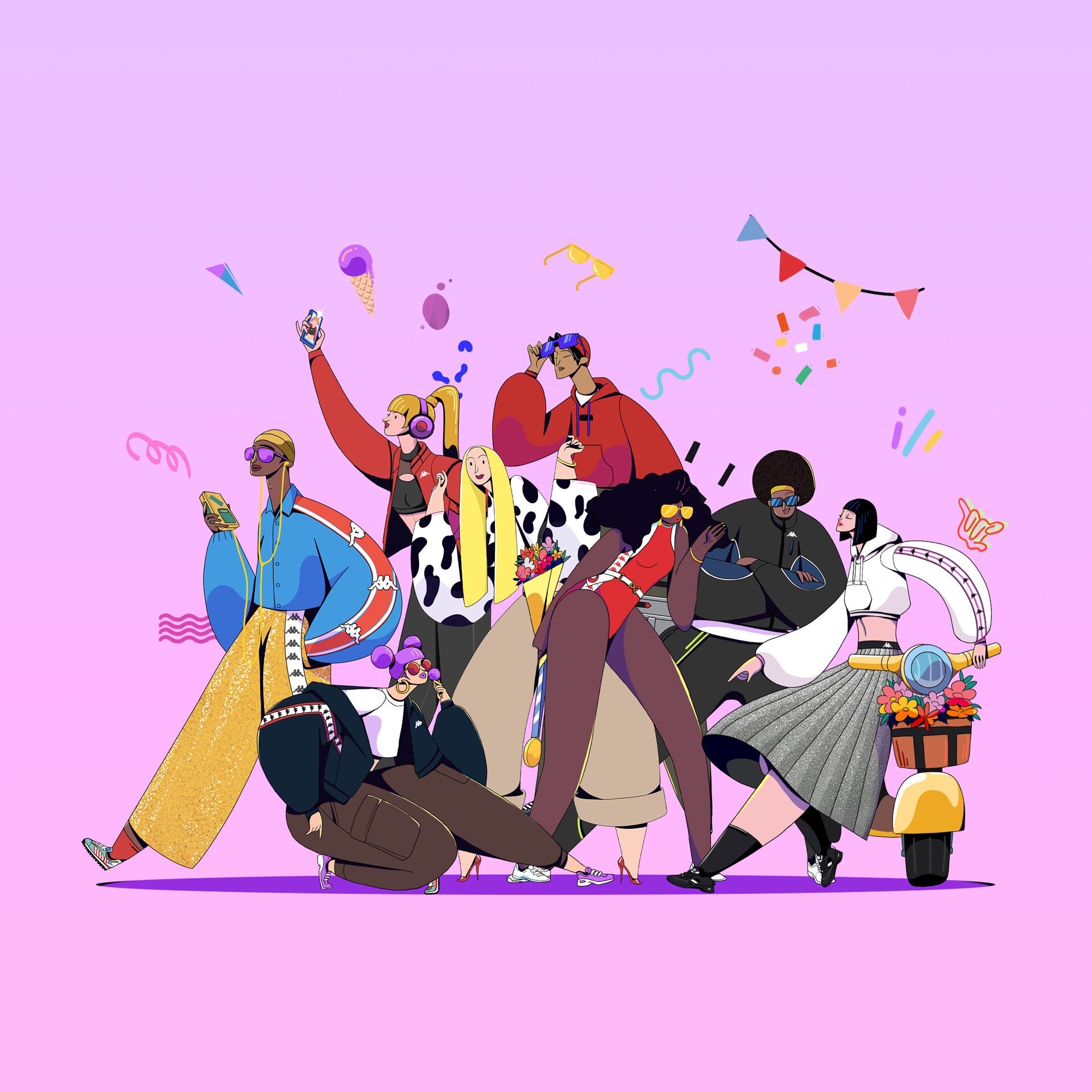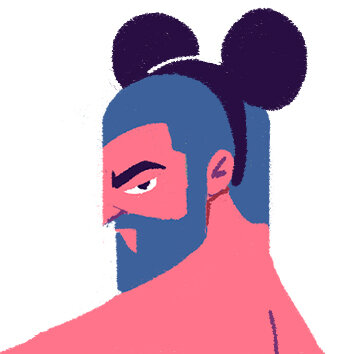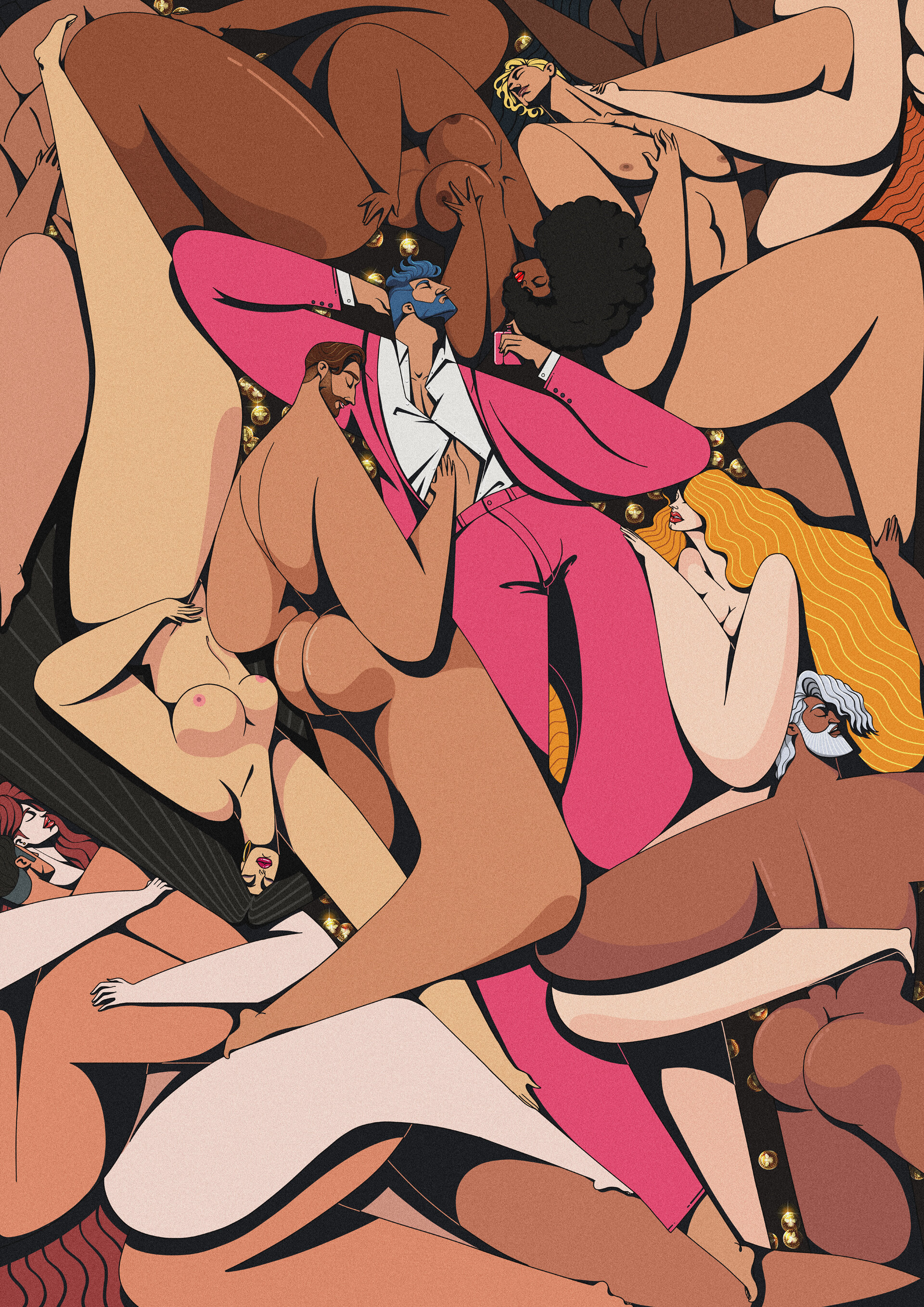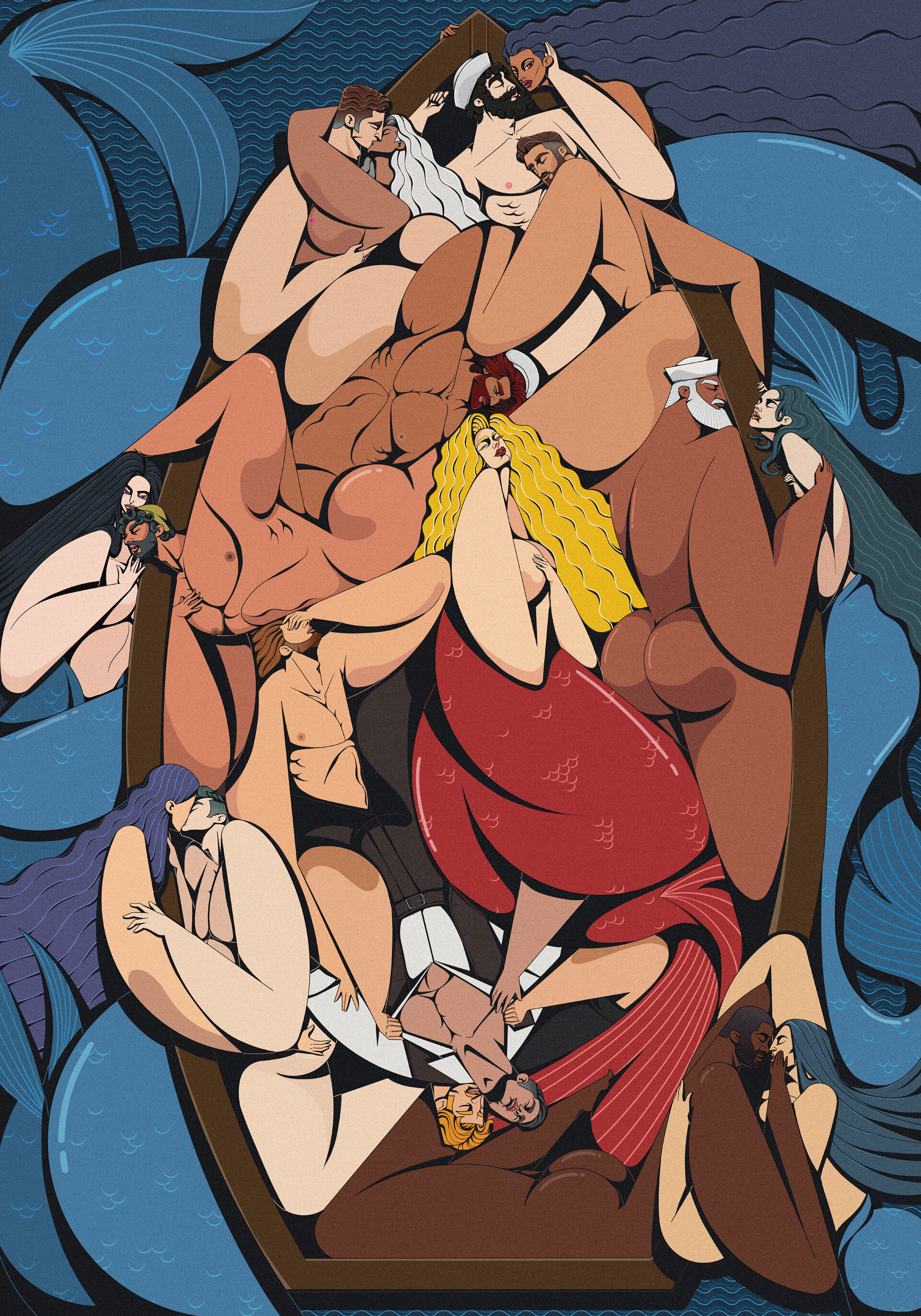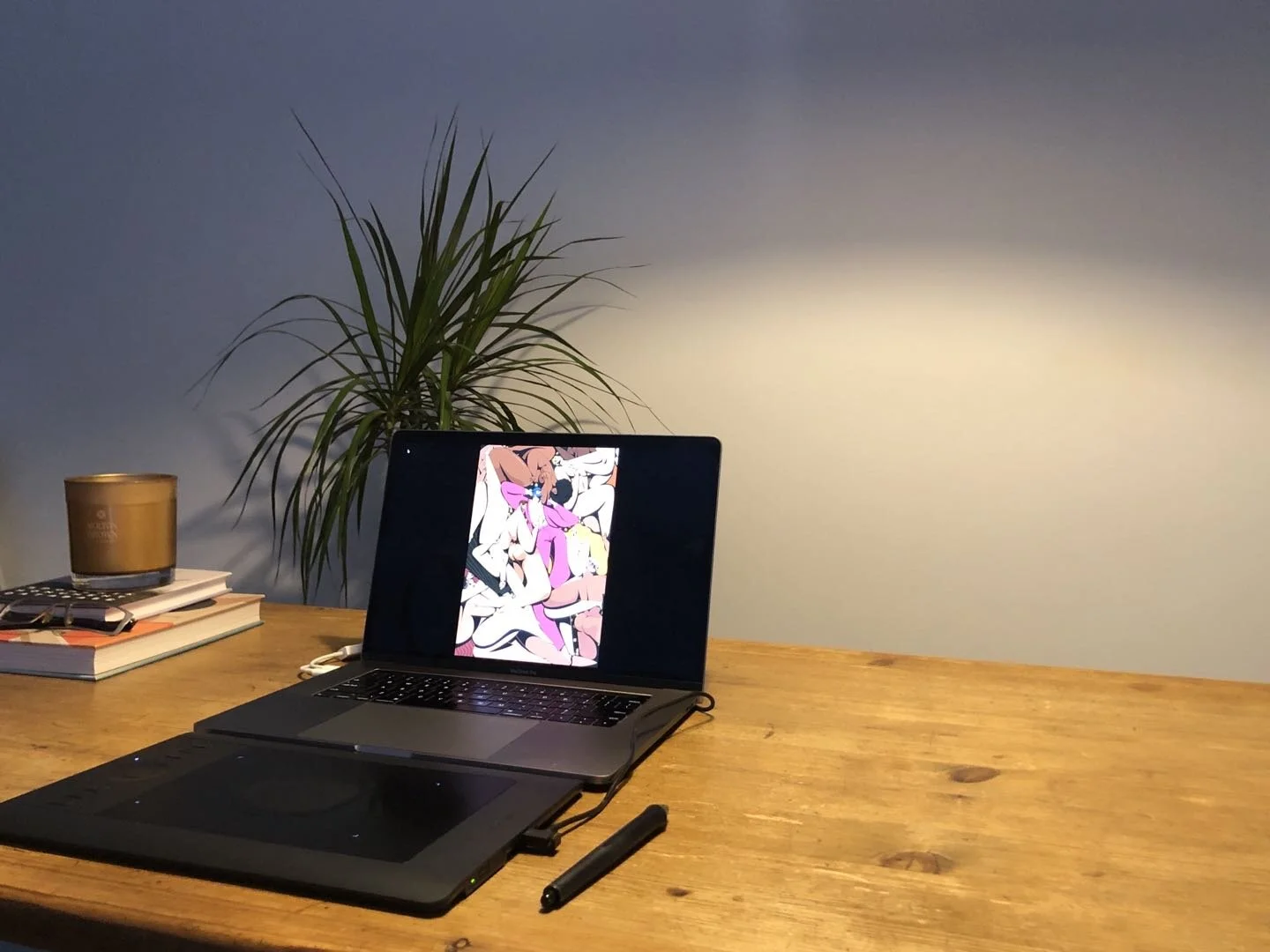Find Your Own Way to Balance Commercial and Creative
Illustration by Jazzy Yuan
1. If illustration were a long-time friend, how would you envision it?
Momo Shou: To me, illustration would be like a magic pen, a tool that brings my imagination to life and allows me to create and express myself freely.
Jazzy Yuan: I would imagine illustration as a fierce and cold-looking man with a rich and complex personality, someone who may seem distant at first but holds a wealth of creativity and inspiration within.
Regenerate response
Illustration by Momo Shou
2. If you were to stop doing illustration, what would you consider doing without considering reality? Why?
Momo Shou: If I didn't do illustration anymore, I would love to become a flower farmer because I have a deep appreciation for plants and enjoy living in close harmony with nature.
Jazzy Yuan: If I were to stop being an illustrator, I might pursue a career as a traveler or adventurer because of my insatiable curiosity and desire to experience all that life has to offer.
3. How did you come to be an illustrator? Do you embrace the label?
Momo: Growing up in a family of designers, with parents who were both artists, I was exposed to various art materials from a young age, and drawing became a natural way for me to express myself and communicate my thoughts.
Jazzy: Initially, I didn't have a clear goal of becoming an illustrator. After graduating, I pursued jobs related to art, such as game art. However, I realized that my passion was in drawing itself, not just in the context of games. This led me to explore the field of illustration in the internet industry, and eventually, I officially entered the illustration industry. As for the label, I don't think too much about it, especially when I'm working as an illustrator. It's a normal part of my identity and doesn't define me entirely.
4. What distinguishes commission works from personal works? How do you balance between the two creative modes?
Momo: Commission works are like exams for me, where I strive to meet specific requirements within a given timeframe and theme. On the other hand, personal projects are more like research studies, where I can explore my own interests and delve deeper into my creative process. Both commercial and personal projects are equally important for illustrators, so I schedule long-term personal projects alongside commission works to strike a balance between the two.
Jazzy: I personally separate commercial projects from personal projects in terms of my creative approach and attitude towards them. Commercial works are more focused on meeting client requirements and deadlines, while personal works allow me to freely express my own ideas and artistic style without any constraints. I try to maintain a balance between the two by allocating time and energy to each based on their respective priorities in my creative journey.
Illustration by Momo Shou
Illustration by Jazzy Yuan
5. How do you typically initiate a project? What is your preferred creative environment?
M: I usually start by gathering relevant materials related to the project, such as images and background stories, to ignite my passion and imagination. I find that a quiet late night is my favorite environment for creative work.
J: I begin by collecting information and researching the necessary background for the project. Sometimes, I even create a simple mind map to guide my creative process. I prefer to work in a dimly lit environment with a desk lamp.
6. Do you believe an illustrator's style evolves over time? Is it influenced by trends and industry pressures?
M: As a commercial illustrator, you inevitably face various environmental pressures, and how you transform and adapt to those pressures depends on your choices.
J: Many people who know me would agree that I have a diverse range of styles, and some clients might view my portfolio as a collection from different artists. I believe that style does evolve with experience, with some aspects remaining consistent and others constantly changing. It's okay to have different styles. I think there is always some pressure in the industry, but each individual may face different challenges. Some artists choose to stick to their unique style without compromise and eventually gain recognition. Others may embrace new things and adapt, resulting in a different creative direction.
7. How do you typically build your creative material and inspiration resources?
M: I have my own image library where I store and categorize materials regularly. I also have a vast collection of books, including old books and art collections. Additionally, I maintain a private board on Pinterest for inspiration, and I find that regular exhibitions, relaxation, and meaningful conversations with friends are excellent sources of ideas.
J: I believe building an inspiration library is a continuous process of input and accumulation. I also record any sudden bursts of inspiration in my phone whenever they strike, regardless of the time or place.
Illustration by Jazzy Yuan
Illustration by Jazzy Yuan
Illustration by Momo Shou
8. Can you tell us which creative process is most important to you?
M: For me, it's crucial to do multiple iterations of the same image in Sketch. It allows me to explore different possibilities and refine my ideas.
J: LOL, is there really a difference in the creative process? The best approach I've found is to draw from start to finish without making any changes!
9. Who is your dream client and why?
M: My dream client is the next customer who brings a new deadline. I'm always eager to take on new challenges and push my creative boundaries.
J: My dream client would be the Tate Museum! Having my work exhibited there would be a proud moment for me, as it signifies recognition and validation of my artistic skills.
10. Do you think systematic teaching is important for illustrators to get started? What should newcomers pay attention to?
M: I believe it's essential to draw according to your own ideas and not be too concerned about others' evaluations. Trusting your own creativity is key to finding your unique style and voice as an illustrator.
J: I don't have any specific advice. Just draw what you like and how you like. Life is short, so don't be too hard on yourself as a newcomer in the field of illustration.
11. How do you rate your past works, and what kind of works do you consider perfect?
M: I see my past artworks as a reflection of my growth path. For me, they are perfect if they honestly depict the reality of the present moment and showcase my progress as an artist.
J: Although there may be flaws in my past works, I still cherish them as they represent a record of my artistic journey. They are precious to me because they are unique and not reproducible. I believe that perfection is subjective and that no work can be truly perfect.
12. Please recommend the top three soundtracks you like to listen to when working.
M: Movie: "Free Solo"
Music: "Electricity" - Orchestral Manoeuvres in the Dark
"Intro" - The XX
"Planet" - Supercar
J: I enjoy listening to soundtracks from commercial movies as they help me relax while working. One of my favorites is "The Devil Wears Prada," which I've watched multiple times. Some of my other top picks include "Pacific Rim," "Superman Man of Steel," and "Paprika," all of which have captivating soundtracks.
Momo Shou’s Studio
Jazzy Yuan’s Studio


